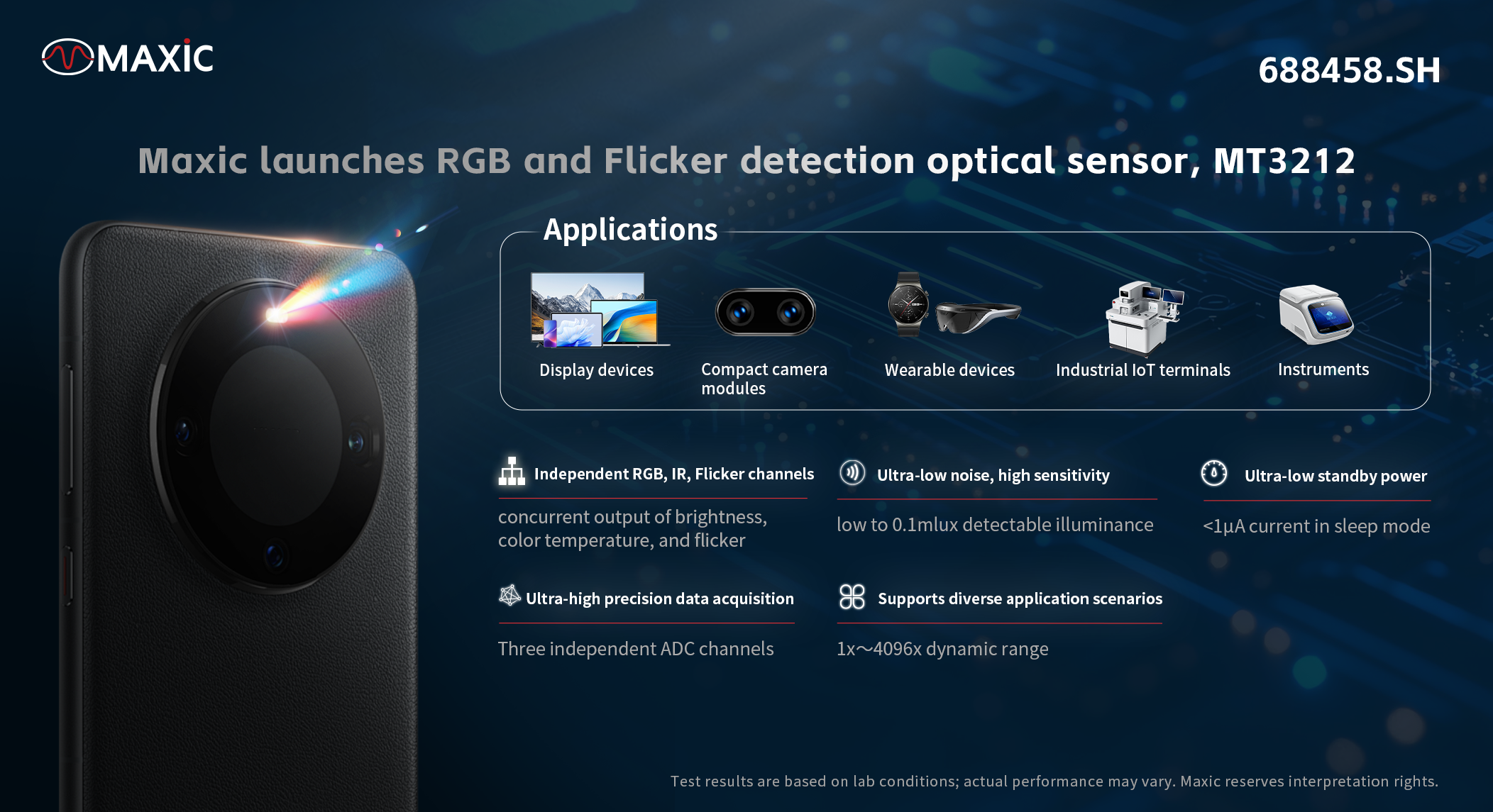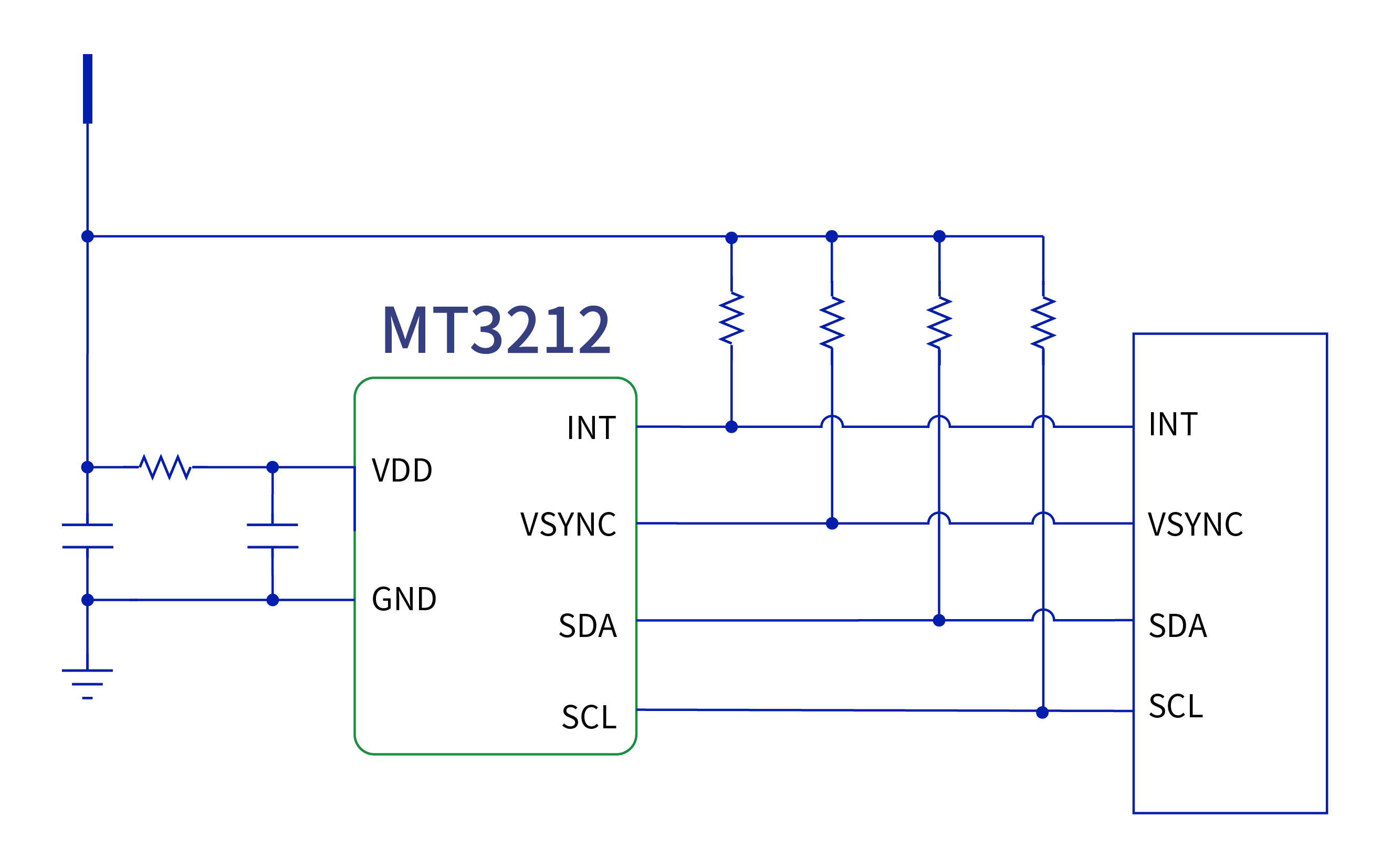Revolutionary Advancement | Maxic Introduces MT3212 Optical Sensor Supporting RGB and Flicker Detection
-
Release Date2025-04-10
-
Page View32 times

As modern industries move toward faster, intelligent, and more automated production, the need for better lighting and visual experience is increasing. Ambient light sensing technology has also undergone continuous iterations and upgrades. In the past, color temperature detection primarily relied on basic optical components and manual analysis. However, with breakthroughs in semiconductor technology, RGB and multispectral sensors have become the standard, enabling precise quantitative analysis of light source color temperature, flicker frequency, and other key parameters.
Smart devices, IoT, smart homes, and human-centric lighting are experiencing explosive growth, driving color temperature sensing technology into a new era with high precision, ultra-low power consumption, and dynamic scene adaptation. With built-in AI and smart calibration, they can detect changing light in real time—giving smart devices the ability to sense colors almost like the human eye.

As the smartphone market matures, screen color management and color reproduction in photos and videos have become key features for AI-powered smartphones. Maxic’s new MT3212 sensor supports RGB and flicker detection. It sends real-time data about brightness, color temperature, and flicker to the main control chip. This allows the screen to automatically adjust its color temperature for a more realistic display experience, and helps the camera to set accurate white balance and exposure time—avoiding problems like under-exposure, over-exposure, or more patterns. It can significantly widen the dynamic range and improve the image signal-to-noise ratio (SNR).
MT3212 is available in transparent and compact OLGA package with dimension of 2.0mm×1.0mm×0.5mm. It supports 1.2V/1.8V I²C communication and can be used in many devices like TVs, tablets, smartphones, laptops, camera modules, wearables, smart glasses, smart home products, industrial IoT devices, and instruments.

Features
Independent RGB, IR and Flicker channels for concurrent brightness, color temperature and flicker output
1x–4096x wide dynamic range for diverse application scenarios
16-bit ADC channels for high-precision data acquisition.
Available in 2.0mm×1.0mm×0.5mm OLGA package
Low to 0.1m lux/lsb detectable illuminance
Self-developed optical coating technology enabling better ambient light sensing precision and human-eye response
Supports 1.2V/1.8V I2C interface, Ideal for 1.2V new low-power platforms
<1μA power in sleep mode

Technical Highlights
Ultra-low noise, high sensitivity
MT3212 features an innovative photoelectric conversion architecture, achieving industry-leading sensitivity of 0.1m lux/lsb. It accurately detects slight change in light, meeting the high-precision sensing requirements of under low-illuminance conditions.
Intelligent wide dynamic range
MT3212 is applicable to various applications with diverse signal amplifying requirements due to its up to 4096x dynamic range. By optimizing the circuit architecture and noise suppression technique, the signal interference in low-illuminance environments is significantly reduced, It achieves as low as 20LSB dark current when the gain is 4096x, providing reliable assurance for high-precision optical signal detection.
Independent 16-bit ADC channels
The sensor integrates three independent 16-bit ADC channels, enabling ultra-precise data capture, ideal for applications requiring ultra-high-precision signal.
Supports up to 7kHz detection
Supporting flicker detection from 50Hz to 7kHz. MT3212 is applicable to mainstream light applications, like LED, fluorescent, PWM dimming, and high-frequency LED drivers etc.
Test results are based on laboratory conditions. Actual performance may vary by application environment and product batch. Maxic Technology reserves the right of final interpretation.
Recommended News
-
2022-09-14
Grand launch | MT5785: 100W ultra-fast wireless charging and 18W reverse transmission
-
2022-08-05
Core leads new era | Maxic participated the Guangzhou International Lighting Exhibition 2022
-
2022-07-04
Maxic launched a fully integrated ultra-low power optical proximity sensor
-
2022-06-24
Maxic launched a high performance wired fast charging 20W~65W overall solution



 Back
Back